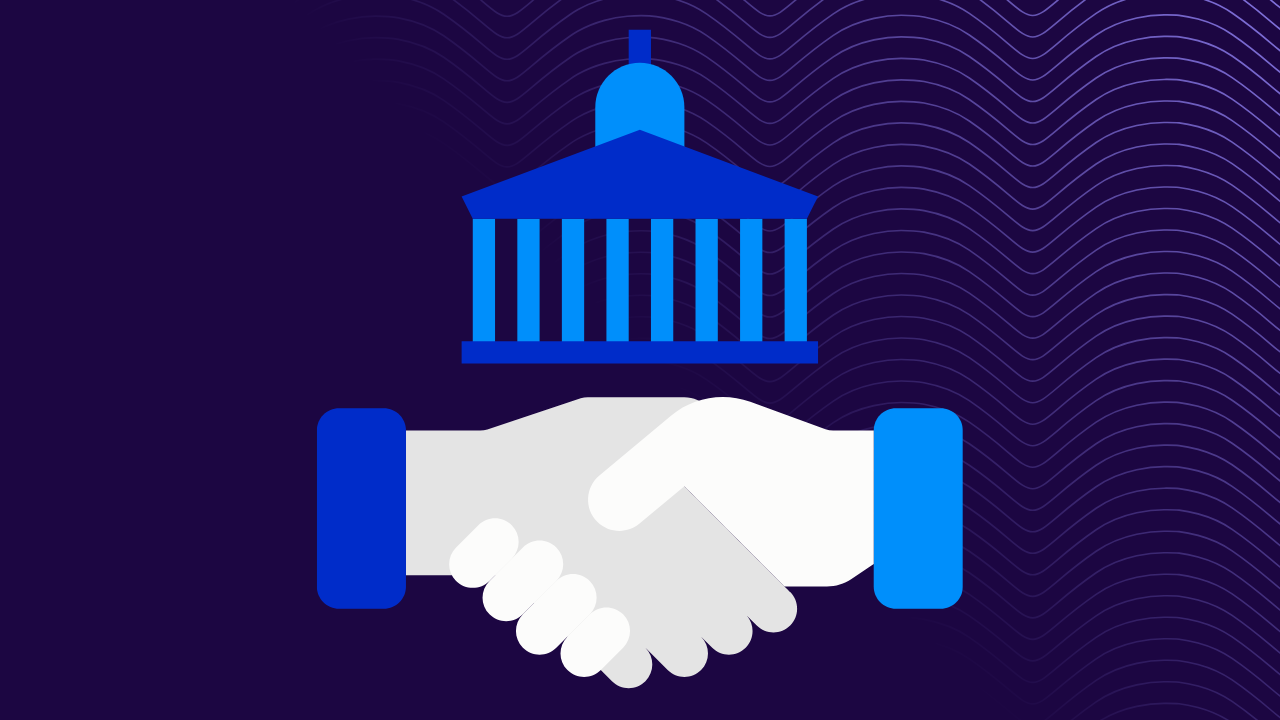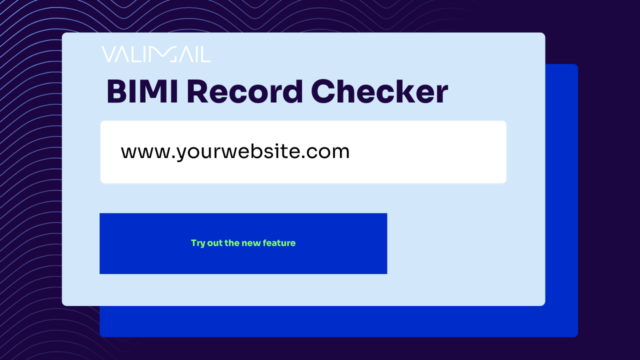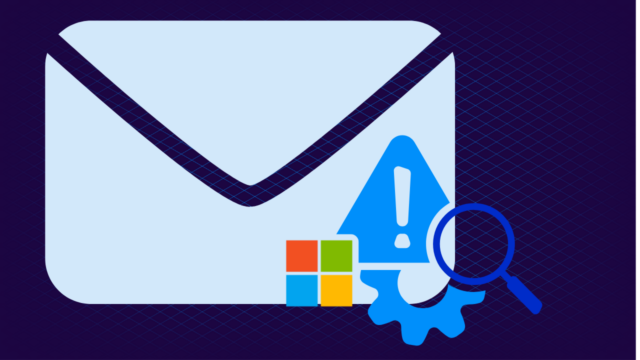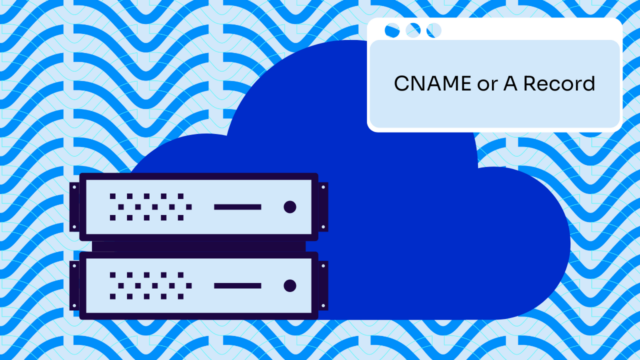Imagine spending months developing the perfect cloud solution for government agencies, only to hit a wall because you’re missing FedRAMP compliance. Or maybe you’re a federal agency looking to modernize your systems but feeling overwhelmed by FedRAMP requirements. Either way, you’re in the right place.
FedRAMP (Federal Risk and Authorization Management Program) isn’t just another acronym in the alphabet soup of government regulations—it’s the gold standard for cloud security in the federal space. FedRAMP provides a standardized approach to security assessment, authorization, and continuous monitoring for cloud services handling federal data.
Since its launch in 2012, FedRAMP compliance has become mandatory for any cloud service provider wanting to work with federal agencies. And with the US government’s push toward cloud-first solutions, understanding FedRAMP is more important than ever.
Below, you’ll learn:
- How to maintain your FedRAMP status once you get it
- What FedRAMP compliance actually means (in plain English)
- Why FedRAMP authorization matters for your business
- The difference between FedRAMP certification levels
- Step-by-step processes to achieve FedRAMP compliance
- Real costs and timelines for FedRAMP authorization
Learning the FedRAMP authorization process might not be the most exciting task on your to-do list, but getting it right could make or break your ability to serve federal customers.
We’ll walk you through everything you need to know about FedRAMP compliance, including what it is, why it matters, and how to achieve it.
What is FedRAMP compliance?
FedRAMP, or Federal Risk and Authorization Management Program, is a US federal government program with a standardized approach to data security, authorization, and monitoring for cloud service offerings (CSOs) and products.
The government wants to ensure federal agencies use the right tools to mitigate risk and data leaks—this is how they’ve made it happen.
The FedRAMP standard was initiated by the Office of Management and Budget (OMB) in 2012 after the Cloud First Policy (now renamed as Cloud Smart Strategy).
Currently, the FedRAMP program is governed by the Joint Authorization Board (JAB), which includes Chief Information Officers (CIOs) from the following:
- General Services Administration (GSA)
- Department of Defense (DoD)
- Department of Homeland Security (DHS)
CSOs certified by FedRAMP have gone through a rigorous testing and monitoring process. (You can see services that are FedRAMP-compliant on the FedRAMP marketplace. The marketplace makes it easier for various government agencies to find suitable CSOs without authorization.)
If you’re looking for a DMARC-as-a-service guaranteed by FedRAMP, Valimail’s solution is authorized for government use under the GSA FedRAMP program. We have the reliability and security needed to support federal, local, and state government organizations.
Why is FedRAMP important?
FedRAMP authorization isn’t something to take lightly.
It’s one of the most rigorous authorization certifications to go through as a cloud-based platform or business with cloud service offerings. According to the mandate, federal agencies default to cloud-based solutions whenever possible.
While cloud-based solutions will improve the operational efficiency of an organization, it also introduces cloud security risks that the public sector simply can’t afford. For instance, a data breach of a government agency could result in a loss of trust from citizens, major financial loss, and even a danger to national security.
Ultimately, FedRAMP provides a standardized approach to verify the security of cloud services handling federal data effectively and cost-effectively.
But besides improving your credibility and security as a cloud service provider, FedRAMP provides the additional following benefits:
- Increased consistency in the security of cloud solutions against National Institutes of Standards & Technology (NIST) and FISMA-defined standards
- Improved transparency and trust between the US government and cloud providers
- Automation and real-time monitoring to simplify the authorization process
- Expedited/speedy adoption of cloud-based solutions
- Secure cloud solutions through the reuse of assessments and authorizations
How to become FedRAMP compliant
These two paths are for cloud products with low, moderate, and high impact levels.
There are two ways to achieve FedRAMP compliance:
- JAB authorization
- Agency authorization
Before anything else, you need to determine which path you’ll take.
The JAB route is limited to approximately 12 CSOs per year. If your CSO is something that you think will be broadly used by all government agencies, it’s possible that you can go through this route.
Unlike the JAB route, the agency route has no specific schedule. You can take this route if you have an agency to partner with that will use your services.
Although there are two different paths, the core processes remain the same. After selecting the path you’d like to take, there are three more steps you need to go through to achieve authorization to operate (ATO):
- Preparation
- Authorization
- Continuous monitoring
Let’s take an in-depth look at the two different pathways and their respective FedRAMP processes below.
Note: Other than the two main paths you’ll see here, there’s also tailored authorization for low-impact SaaS providers that are much simpler than the agency and JAB authorization processes. (The process for tailored authorization is much simpler, as it’s designed mainly for project management tools and other very low-impact solutions.)
FedRAMP processes for compliance
JAB process for FedRAMP compliance
The JAB authorization process prioritizes CSOs likely to be used government-wide (for example, cloud computing platforms like AWS or Google Workspace). In this case, the ATO is issued by JAB, but agencies still need to issue their own ATO to work with you.
In the preparation stage, there are three steps to go through:
- FedRAMP Connect: JAB only authorizes 12 CSOs each year, so you’ll need to go through FedRAMP Connect, which is a process that identifies which CSOs will undergo the assessment process.
- A readiness assessment: Cloud service providers (CSP) also have to achieve a FedRAMP Ready status, which they can get by working with an accredited Third Party Assessment Organization (3PAO) for a Readiness Assessment.
- A full security assessment: The CSP will have to work closely with an accredited 3PAO and turn in several documents as a security authorization package.
Finally, the CSP and assessor from the 3PAO will have to work with JAB to complete the authorization process. This stage entails a review of the CSO’s system architecture, security capabilities, risk posture, as well as the security authorization package submitted during the preparation stage.
After completing the review and addressing issues, you’ll finally attain your Provisional Authority to Operate.
The final step is the continuous monitoring program, where you’ll need to turn in monthly monitoring deliverables and undergo an annual assessment to ensure your CSO is still safe to use.
Agency process for FedRAMP compliance
The agency authorization allows CSOs to partner with specific agencies to attain an ATO for that particular agency. This process is often used for CSOs with a niche use case.
Unlike JAB authorization, you can undergo agency authorization if you have an agency to collaborate with to complete the process.
Instead of FedRAMPConnect, the agency preparation is a two-step process that starts with a readiness assessment and ends with pre-authorization. Additionally, the readiness assessment is optional in this route.
Pre-authorization is a step to formalize the connection between the CSP and the agency it’s working with. This is also the time to prepare the security deliverables and fix the security requirements needed to achieve FedRAMP.
To start the authorization process, the CSP will collaborate with a 3PAO to go through a full security assessment and create the security authorization package, similar to the documents created during a JAB authorization.
In the final step of the authorization process, the agency will review the security authorization package submitted by the CSP and publish an ATO letter if the CSP passes the review.
To register for the FedRAMP marketplace, the CSP and 3PAO will then submit the required documents and the ATO letter from the agency to be reviewed by the FedRAMP Project Management Office.
Requirements for FedRAMP compliance
Here are the requirements for FedRAMP compliance at a high level:
- Fulfill the security controls outlined in NIST 800-53 and supplemented by the FedRAMP Program Management Office.
- Implementation of controls that comply with FIPS 199 categorization.
- Completion of various FedRAMP documentation, including the System Security Plan (SSP) and a Plan of Action and Milestones (POA&M).
- Assessment by an accredited Third Party Assessment Organization (3PAO) to complete the security authorization package documents and assist in the authorization process.
- Obtain Joint Authorization Board (JAB) Provisional ATO (P-ATO) or Agency ATO.
- Implement a Continuous Monitoring (ConMon) program, including monthly vulnerability scans and an annual assessment.
For more information, FedRAMP provides templates for documents you have to submit, training, resources, and other resource materials for small businesses and startups.
FedRAMP compliance preparation checklist
Ready to get started? Here’s what you’ll need to set yourself up for success:
1. Start with your system architecture
Think of this as creating a blueprint of your entire operation. You’ll need to map out exactly how your system works, where sensitive data lives, and how information flows between different parts. This isn’t just about creating pretty diagrams—it’s about understanding every nook and cranny of your system that FedRAMP assessors will need to evaluate.
2. Build your security foundation
Before you even think about authorization, you need to get your security house in order. This means implementing NIST 800-53 controls, setting up proper encryption, and double-checking you have strong access controls in place.
3. Get your team in place
FedRAMP isn’t a one-person show. You’ll need a dedicated project manager, a solid compliance team, and usually a Third Party Assessment Organization (3PAO) to evaluate your system. Make sure everyone knows their role and has the resources they need to succeed.
4. Create your policy playbook
Policies and procedures are the rulebook everyone in your organization needs to follow. This includes everything from how you handle security incidents to how you manage system changes. The key here is making these policies clear, practical, and easy to follow.
5. Set up continuous monitoring
FedRAMP isn’t a “set it and forget it” certification. You need systems in place to constantly monitor for vulnerabilities, manage patches, and track security issues.
6. Get your documentation ready
If there’s one thing FedRAMP assessors love, it’s documentation. Your System Security Plan (SSP) will become your new best friend, along with various other required documents. Start organizing these early—you’ll be glad you did.
7. Train your people
The strongest security system in the world won’t help if your team doesn’t know how to use it. Develop training materials that actually make sense to your users, and make sure everyone understands their role in maintaining security.
8. Choose your authorization path
Will you go for agency authorization or try for the JAB path? This decision affects your timeline, budget, and approach. Choose carefully based on your specific needs and resources.
FedRAMP vs other compliance frameworks
Learning how FedRAMP relates to other compliance frameworks will help you navigate federal security requirements. These frameworks share common goals of protecting sensitive information, but they each have different purposes, requirements, and applications.
| Feature | FedRAMP | NIST 800-53 | FISMA | CMMC | SOC 2 |
| Primary focus | Cloud services for federal agencies | Federal information systems | All federal agency systems | Defense contractors | Commercial organizations |
| Target audience | Cloud service providers | Federal agencies | Federal agencies and contractors | Defense Industrial Base | Private sector companies |
| Foundation | NIST 800-53 with cloud-specific additions | Core security controls catalog | NIST 800-53 | NIST 800-171 | AICPA Trust Services Criteria |
| Assessment | Requires accredited 3PAO | Various assessment methods | Any qualified third party | C3PAO for higher levels | CPA firms |
| Authorization | Do once, use many times | Agency-specific ATO | Agency-specific ATO | DoD-wide certification | Private certification |
| Risk categorization | Low, Moderate, High | Low, Moderate, High | Agency-defined | Levels 1, 2, and 3 | Trust services categories |
| Scope | Cloud environments only | All information systems | All federal systems | Defense supply chain | Service organization controls |
| Continuous monitoring | Standardized requirements (monthly reporting) | Required but varies by agency | Annual reviews | Annual assessments | Annual audits |
| Key benefit | Government-wide cloud authorization | Comprehensive control catalog | Federal system security | Defense contract eligibility | Commercial market trust |
FedRAMP and NIST 800-53
FedRAMP builds upon NIST 800-53 controls but adds specific requirements tailored to cloud environments . FedRAMP uses NIST 800-53 as its guideline so that cloud services meet federal security standards. This relationship creates both similarities and important distinctions.
Key differences:
- Scope: NIST 800-53 applies broadly to all federal information systems; FedRAMP focuses specifically on cloud services.
- Authorization: FedRAMP requires assessment by accredited 3PAOs; NIST 800-53 implementations can be verified through various assessment methods.
- Reusability: FedRAMP authorization follows a “do once, use many times” approach across agencies; NIST 800-53 ATOs typically need to be obtained from each agency.
FedRAMP vs FISMA
The Federal Information Security Modernization Act (FISMA) and FedRAMP have complementary but distinct roles. FISMA applies to all federal agencies, departments, and contractors, while FedRAMP is designed specifically for cloud service providers working with federal agencies.
Notable distinctions:
- Assessment requirements: FISMA allows assessments by any qualified third party capable of evaluating against NIST 800-53 standards, whereas FedRAMP assessments must be performed by an accredited 3PAO.
- Authorization process: Unlike FISMA, which requires organizations to seek an ATO from each individual federal agency, a FedRAMP ATO qualifies a cloud service provider to do business with any federal agency.
- Continuous monitoring: Both frameworks require ongoing monitoring, but FedRAMP has more standardized requirements specific to cloud environments.
FedRAMP vs CMMC
The Cybersecurity Maturity Model Certification (CMMC) and FedRAMP serve different segments of the federal contracting ecosystem:
- Target audience: CMMC focuses specifically on protecting sensitive data within the defense supply chain, while FedRAMP focuses on the broader federal supply chain.
- Underlying standards: CMMC is primarily based on NIST 800-171, while FedRAMP is strongly influenced by NIST 800-53.
- Implementation approach: CMMC uses a maturity model with defined levels, while FedRAMP uses impact levels (Low, Moderate, High).
FedRAMP vs SOC 2
SOC 2 is a widely recognized private-sector compliance framework that differs significantly from FedRAMP in several important ways:
- Origin and governance: SOC 2 “developed organically to report on the information security controls within an organization” from financial auditing roots, while FedRAMP was created specifically by the U.S. government.
- Scope and complexity: FedRAMP is generally more comprehensive and prescriptive than SOC 2.
- Target market: SOC 2 focuses on commercial organizations handling customer data; FedRAMP focuses exclusively on federal cloud security.
Which framework should you choose?
Your compliance strategy should align with your business objectives:
- If you’re a cloud service provider wanting to work with federal agencies, FedRAMP is mandatory.
- If you’re a defense contractor, CMMC (and potentially FedRAMP) may be required.
- If you’re primarily in the commercial sector but occasionally work with government, consider NIST 800-53 or NIST 800-171 as foundational frameworks.
- If you’re pursuing multiple compliance standards, start by mapping the overlapping controls to maximize efficiency.
Valimail: Compliance and security all around
If you still need to set up DMARC and are looking for a platform that’s guaranteed to be secure, Valimail is the only provider with FedRAMP Compliance accreditation.
Contact us today if you’re looking for a quick and simple way to DMARC enforcement. We can help you assess what you need to achieve DMARC enforcement to attain FedRAMP accreditation quickly.



